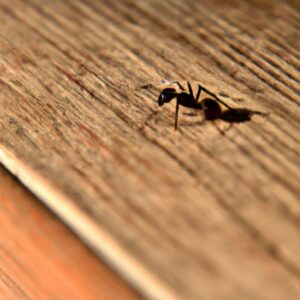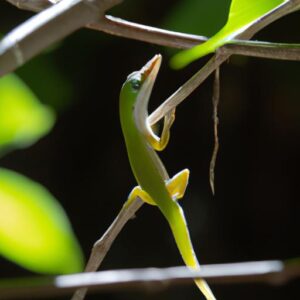Introduction
Elephant ear bulbs, with their large, exotic leaves, add a touch of tropical beauty to any garden. These bulbs, also known as Colocasia or Alocasia, are a popular choice for gardeners looking to create a lush and vibrant outdoor space. But how do you ensure that your elephant ear bulbs thrive and reach their full potential? It all starts with the planting process.
When it comes to planting elephant ear bulbs, proper techniques are key to successful growth. From selecting the right planting site to caring for your bulbs throughout the season, every step plays a crucial role in the health and vitality of your plants. So let’s dive into the world of elephant ear bulbs and discover the secrets to cultivating a stunning garden oasis.
Best Time to Plant Elephant Ear Bulbs
Factors to Consider When Deciding on Planting Time
Planting elephant ear bulbs at the right time is crucial for their successful growth. Factors such as temperature, soil moisture, and sunlight exposure all play a role in determining the ideal planting time. Before you start digging, consider the climate in your region and how it may affect the growth of your elephant ear bulbs. By taking these factors into account, you can ensure that your bulbs have the best chance of thriving in their new environment.
Optimal Seasons for Planting Elephant Ear Bulbs
While elephant ear bulbs can be planted at various times throughout the year, certain seasons are more favorable for their growth. Spring and early summer are typically the best times to plant elephant ear bulbs, as the warmer temperatures and increased sunlight provide the ideal conditions for root development. By planting your bulbs during these optimal seasons, you can set them up for success and enjoy a bountiful harvest of lush, tropical foliage.
Preparing the Planting Site
Choosing a Suitable Location for Planting Elephant Ear Bulbs
Before diving into the planting process, it’s essential to select the perfect spot for your elephant ear bulbs. These plants thrive in moist, well-drained soil and require a location with ample sunlight. Look for an area in your garden that receives partial shade to full sun, as too much shade can hinder the growth of your elephant ear bulbs.
Soil Requirements and Preparation Tips
Elephant ear bulbs prefer soil that is rich in organic matter and has good drainage. To prepare the planting site, ensure the soil is loose and well-aerated. Incorporating compost or peat moss can help improve soil fertility and drainage. Avoid heavy clay soils that can retain excess water, leading to root rot.
Sunlight and Drainage Considerations
When choosing a location for planting elephant ear bulbs, consider the sunlight and drainage conditions of the area. These plants require at least 6-8 hours of sunlight per day to thrive. Additionally, proper drainage is crucial to prevent waterlogged soil, which can cause the bulbs to rot. Ensure that the planting site has adequate drainage to promote healthy growth and development of your elephant ear bulbs.
Planting Elephant Ear Bulbs
Step-by-Step Guide
To plant elephant ear bulbs successfully, start by selecting a suitable location with well-draining soil and partial shade. Dig a hole twice the size of the bulb, ensuring that it is planted upright with the pointed end facing up. Cover the bulb with soil, leaving the top exposed.
Proper Depth and Spacing
Plant elephant ear bulbs at a depth of 2 to 4 inches, depending on the size of the bulb. Space the bulbs 1 to 3 feet apart to allow room for growth and prevent overcrowding. Adequate spacing ensures that each plant receives sufficient nutrients and sunlight.
Tips for Healthy Growth
After planting, water the bulbs thoroughly to help them establish roots. Apply a balanced fertilizer every 4-6 weeks during the growing season to promote healthy foliage. Mulching around the base of the plants helps retain moisture and suppress weeds. Regularly monitor the plants for pests and diseases, taking prompt action to protect your elephant ear bulbs.
Caring for Elephant Ear Bulbs
Watering and Fertilizing Needs
Proper watering and fertilizing are essential for the healthy growth of elephant ear bulbs. These plants thrive in moist, well-draining soil, so be sure to water them regularly, especially during hot and dry periods. A good rule of thumb is to keep the soil consistently moist but not waterlogged. Additionally, fertilize your elephant ear bulbs every few weeks during the growing season to provide them with the nutrients they need to flourish.
Potential Pests and Diseases
While elephant ear bulbs are relatively low-maintenance plants, they are susceptible to certain pests and diseases. Keep an eye out for common issues such as spider mites, aphids, and fungal infections. Regularly inspect your plants for any signs of infestation or disease, and take prompt action to address the problem. Using natural remedies or insecticidal soaps can help keep these pests at bay and protect the health of your elephant ear bulbs.
Maintenance Tips
To promote strong and vibrant growth in your elephant ear bulbs, regular maintenance is key. Remove any dead or yellowing leaves to encourage new growth and prevent the spread of disease. Mulching around the base of the plants can help retain moisture and suppress weeds. Additionally, consider dividing and replanting your bulbs every few years to prevent overcrowding and ensure continued vitality. By following these maintenance tips, you can enjoy healthy and thriving elephant ear bulbs in your garden.
Conclusion
In conclusion, when planting elephant ear bulbs, attention to detail and proper care are essential for ensuring their successful growth. By following the guidelines outlined in this article, you can create a thriving garden filled with lush and vibrant elephant ear plants. Remember to consider the best time for planting, prepare the planting site with care, and provide the necessary maintenance to keep your bulbs healthy.
With a little patience and dedication, you can enjoy the beauty of elephant ear plants in your garden year after year. So go ahead, plant those bulbs, and watch as your outdoor space transforms into a tropical paradise. Happy gardening!




